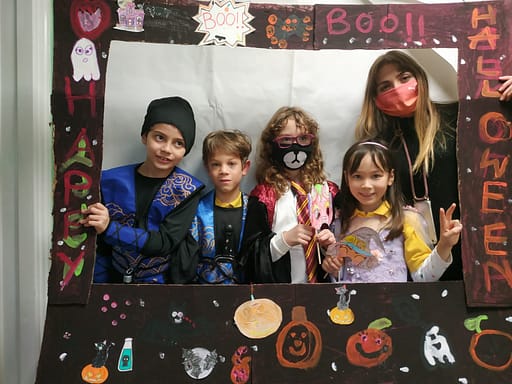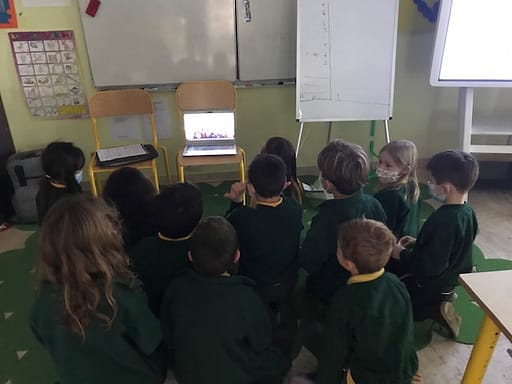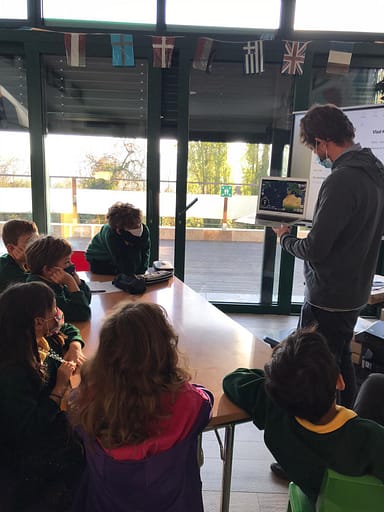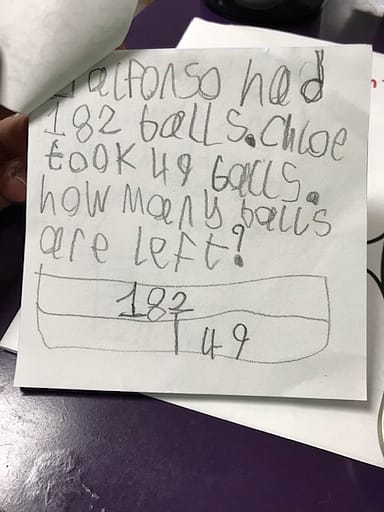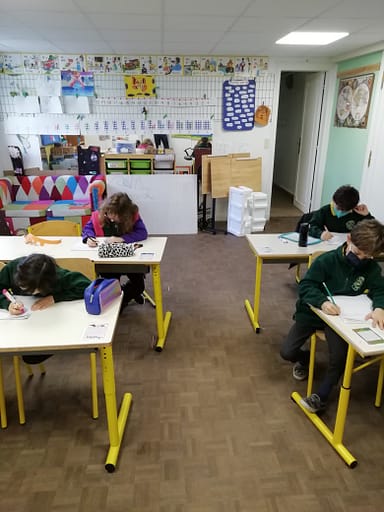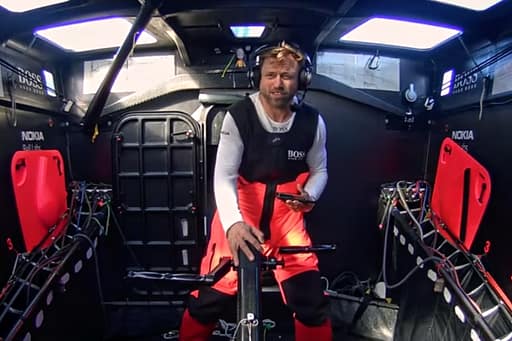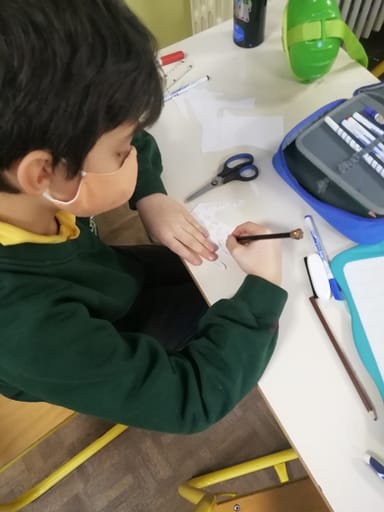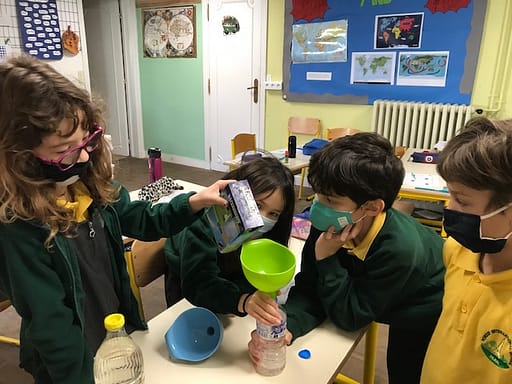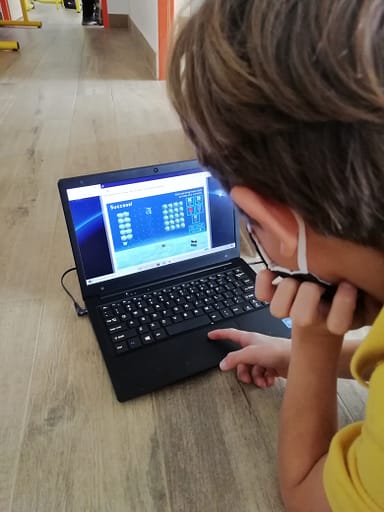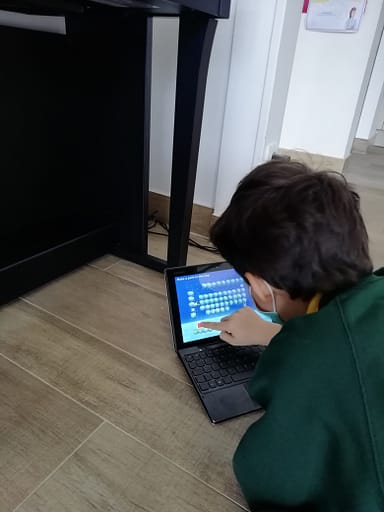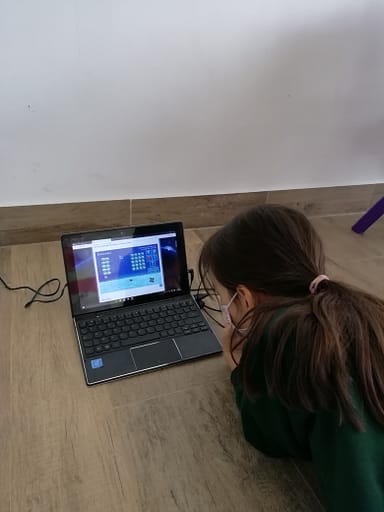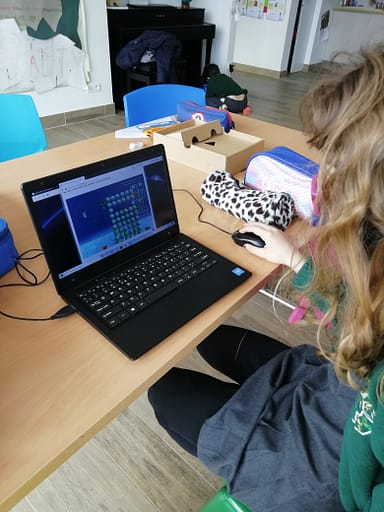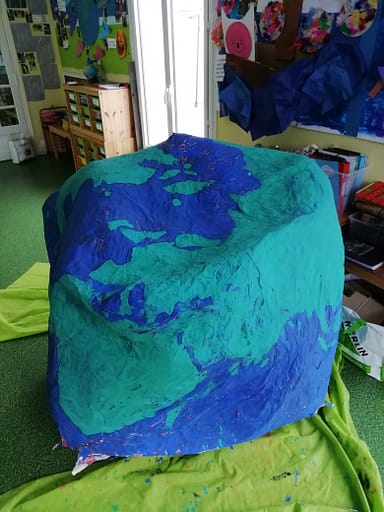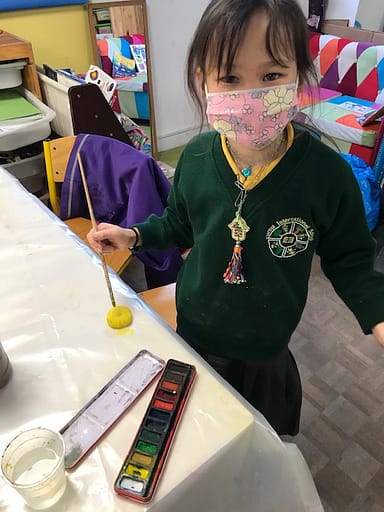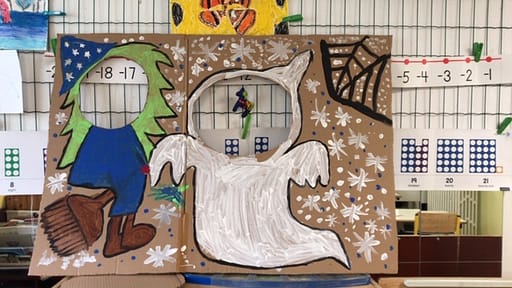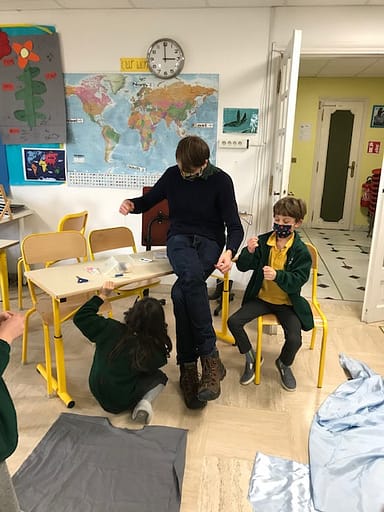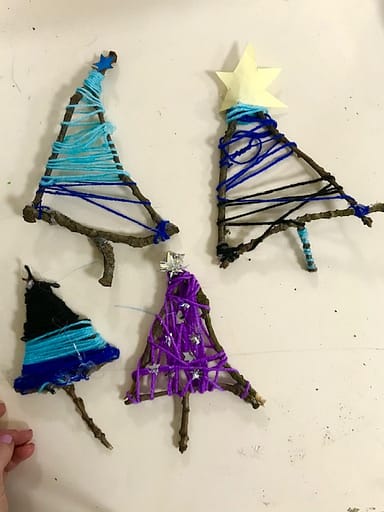Mathematics
Learning objectives achieved this term: We learned to…
– Find 10 or 100 more or less than a given number.
– Recognise the place value of each digit in a three-digit number (hundred, tens and ones).
– Compare and order numbers up to 100.
– Identify, represent and estimate numbers using different representation.
– Add and subtract numbers with up to three digits, using formal written methods of columnar addition and subtraction.
– Solve problems, including missing number problems, involving addition, subtraction, multiplication and division.
– Represent and solve mathematical statements for multiplication and division.
We were basing our lessons on a big event that is happening this year: Vendée Globe, which is a single-handed non-stop round the world yacht race.
This term, pupils focused on “Geometric shapes”, “Length” and “Multiplication”. For this reason, in a parallel way, they worked on how to solve problems, which included these contents. In practice, the teaching approach used was the ‘Singapore Method’.

Literacy
In Literacy we learned about how to write a diary entry, both from our own perspective and the perspective of another, and how to read and interpret dialogue. Keeping with the theme ‘Around the World’ we looked at the Vendée Globe, a competition which takes place once every four years and requires individual sailors to sail around the world non-stop. We focused our attention on a British sailor named Alex Thomson and wrote a diary entry from his perspective. We looked at the various challenges of being a competitive solo sailor such as the lack of sleep, random fixes to make on a boat and how to remain successful.
We also were busy preparing for the Christmas show, learning all of the lines and reading the script both for comprehension and interpretation of the happenings within the show. Additionally, we had a focus on adverbs and conjunctions this term for grammar and practised spellings regularly.
Learning objectives achieved this term: We learned to…
– identify and implement the characteristics inherent in a diary, such as the date, first-person perspective and informal register
– use connectives and conjunctions in our writing in order to build cohesion and show a clear, chronological order
– describe an event in detail, including who, what, where, when and sometimes why or how
– identify the emotions both within us and others and successfully express that emotion with well-chosen adjectives and descriptions
– use a variety of sentence starters to create more complex sentence structures
– memorise and read out dialogue with the correct tone of voice and cadence
– memorise song lyrics and sing them with the correct pitch and rhythm
– convert narrative text into dialogue text
– comprehend, sequence and interpret texts successfully based on an age-appropriate reading level
– spell words successfully from the Lower Key Stage 2 recommended words list
– identify and use properly various adverbs and conjunctions
Science
Learning objectives achieved this term: We learned to…
-Asking relevant questions and using different types of scientific enquiries to answer
them.
-Gathering, recording, classifying and presenting data in a variety of ways to help in
answering questions.
– Recording findings using simple scientific language, drawings, labelled diagrams,
keys, bar charts, and tables
-Using results to draw simple conclusions, make predictions for new values, suggest
improvements and raise further questions
– Recognising that soils are made from rocks and organic matter; and identify different kinds of fossils.
-Knowing interesting facts about fossils: “How tracks are preserved”.
– Observing that some materials change state when they are heated or cooled, and measure or research the temperature at which this happens in degrees Celsius (°C).
-Solving problems about conversions of Celsius, Kelvin and Fahrenheit degrees, by using the concrete formula.
One of the principal focus of science teaching is to enable pupils to broaden their scientific view of the world around them.
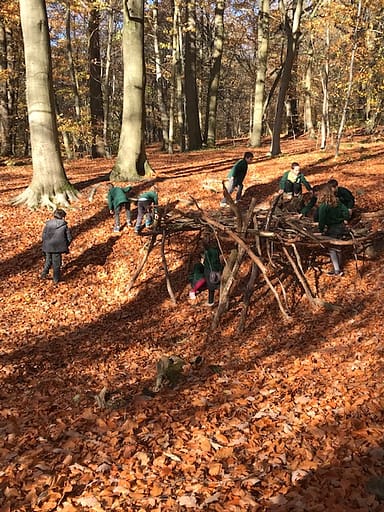
To achieve this goal, pupils have been observing, grouping, carrying out simple comparatives test and experiments, using sources of information. They have worked scientifically throughout guidance, examples, using scientific methods and skills liked to specific elements of the contents.
The principal reasons for why we use this method it is because Singapore math emphasizes conceptual understanding: the “why” not just the “how”, so it allows students to build meaning to learn concepts and skills, as opposed to rote memorization of rules and formulas.
Also, it makes learning mathematics fun and engaging, allows students to understand mathematics deeply, and helps them become proficient at solving very complex math problems.
Providing a real context for students to develop and apply their knowledge is the key to seeing the importance of mathematics in their own lives. This approach makes the learning of mathematics fun and meaningful and helps students develop positive attitudes about math.
Also, as a result of linking subjects, they are able to see a global vision of what they are learning. A clear example could be the following activity, where it is linked Maths, Geography and Science.

From Science, we were working on temperature, so we checked the temperature of some countries and even, they made an experiment: To build their own thermometer. Experiments are a primary component of the scientific method. They promote discovery and learning, allowing them to test theories and hypotheses about how physical processes work.
History and Geography
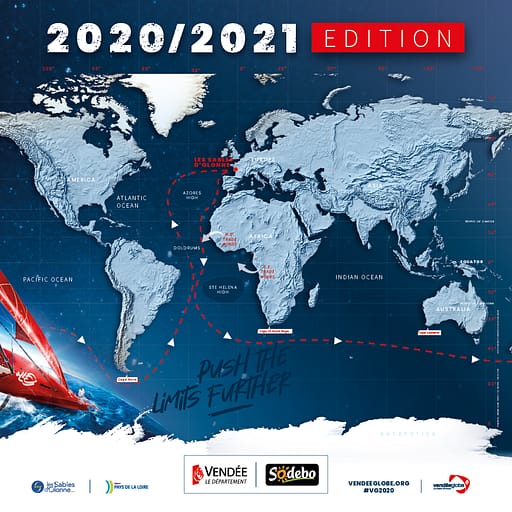
Pupils learned about oceans and the Vendée Globe competition in History and Geography class this term. The Vendée Globe is a non-stop sailing competition for solo sailors which takes place once every four years. Walnuts learned to identify the different oceans and continents, where we live, and about various obstacles in the ocean such as the doldrums, gyres and fast winds of the Southern Ocean.
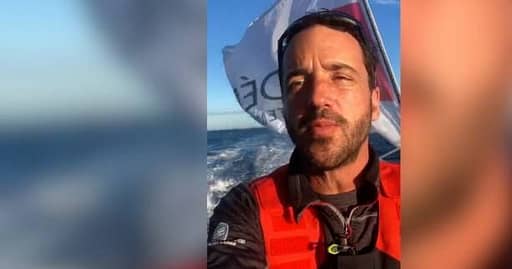
Pupils had a chance to meet Louis Burton via a Zoom call at the beginning of term before Louis Burton set off.
Learning objectives achieved this term: We learned to…
– understand the characteristics which separate an ocean from other bodies of water such as lakes or seas
– identify and locate the different continents and oceans of the world
– understand the different obstacles one can find in the ocean such as doldrums and gyres and how they work (high to low pressure, hot air rising, cold air sinking, Earth’s rotation, Coriolis Effect)
– see how heat allows ocean currents to rise, salt allows ocean currents to fall and how the two can interact together
– appreciate the dangers of our use of plastic and its negative impact on ocean habitats
– identify and observe different marine wildlife and understand how these animals interact with / compete against one another for food and living space
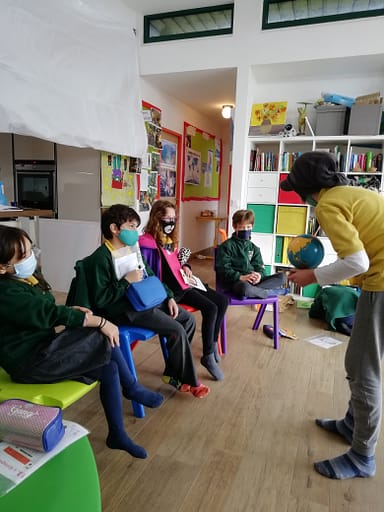
Art and design
Learning objectives achieved this term: We learned to…
– Creating sketch books to record their observations and use them to review and revisit
ideas
– Improving their mastery of art and design techniques, including drawing, painting and
sculpture with a range of materials
Art lessons are the perfect environment to develop pupils’ techniques, their control and use of materials and creativity.
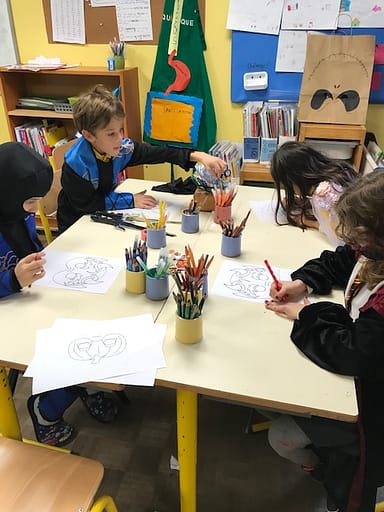
They have created different pieces of art for a meaningful purpose, in this case, was Halloween or Christmas. Using various art and design techniques, including drawing, painting and sculpture with a range of materials; for example, pencil, charcoal, paint, clay.

